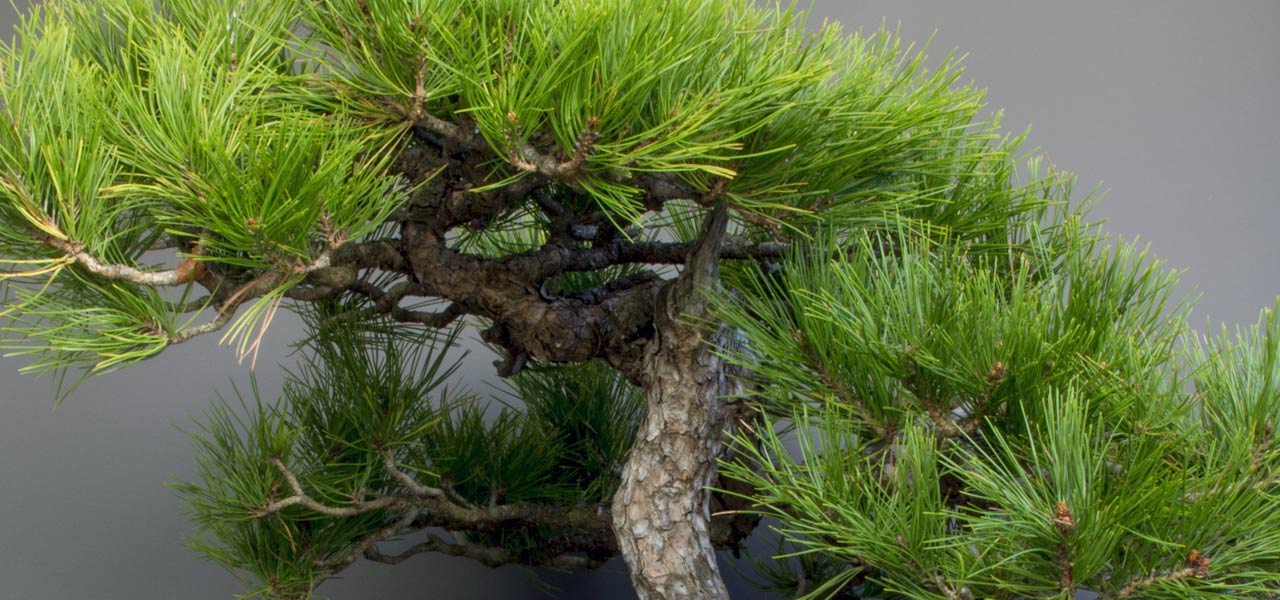spend R1000 & 2kg or less = free shipping.
spend R1000 & 2kg or less = free shipping.
bonsai
gardening
Orchids

Japanese Red Pine Styling
6 min read
Background
In November of 2013 I purchased this tree in Japan in Saitama Prefecture. I was attracted to the shape it was already in, the fairly mature trunk and the overall size of the tree.

Since importing it I have not really done anything with or to it other than just watering and fertilizing. The tree needed to regain vigor as it appeared as though when I purchased it, it had just been repotted. Repotting severely weakens any tree and it can take some time for them to respond. Even at the best of times, it is usually not recommended that one do any decandling on a tree which has been repotted in that same year. In this case, the tree was repotted and then moved half way across the world! However no branches were lost in the time since then and the tree is now healthy once more.
Preparing the tree
Restyling or styling a tree should not be an impulsive event or action. Planning and forethought should be exersized before such work should be carried out.

Typical steps would include:
- Ensuring the tree is in optimal health by using sufficient and appropriate fertilizer.
- Treating the tree with any necessary treatments to make sure the tree is free of pests and debilitating fungi etc.
- Don't repot a tree just prior to restyling. This is a generalization but repotted trees are usually too weak to handle the trees of heavy bending and pruning. If a tree needs to be repotted to achieve #1 then do this at least a full growing season ahead of time.
- Give some thought to the tools and material you will need. If you're going to be doing some heavy bends, do you have sufficient raffia? What about sealers and what about wire of suitable thicknesses.

On some of the branches there was no ramification until fairly far out from the trunk. To remedy this I cut back the branch to some older needles (never cut back to beyond an area without any needles as this will kill the branch). I did this in autumn when the tree was in the process of distributing energy to the various parts of the tree in preparation for the spring bud push. New buds will therefore form where the cut was made, and it is these buds which will develop in spring and which will form the future foliage pads. A narrow branch cutter is very useful for this sort of work as a scissors would not be strong enough and a standard branch cutter a little to big to get into these tight confines and between needles. It is also very important to make these cuts perfectly straight, or buds will not form on either side of the cut and will most likely only develop on one side.

In other areas where the branches had split there were too many needles, so reduction was necessary. As there is no need for these needles to be in the fork of the branch they can be plucked quite safely. The needles were by now completely hardened off so plucking them was simple. If on the other hand you are removing needles from a section of a branch where you hope a new bud might develop, then it is best to cut the needle just above the sheath rather than pluck it.

After thinning the needles at this point the branch will look something like this. I reduced the number of needles till there were about 10 pairs remaining at each growing tip. At this stage of development you are trying to balance the energy of the tree so the spring extensions are reasonably even across the entire tree. Of course, for branches which need to thicken you will not reduce to so few needles, however you will still thin needles closer to the trunk as they would otherwise shield other desirable branches from sunlight, weakening them.

Japanese Red pine are strong growers, just like the Japanese Black pines. If overfed and overwatered they can become extremely strong and the branches quickly thicken too much and appear coarse. At this stage there is really nothing one can do about it other than perhaps to graft onto the existing branches, however Japanese Red pines do also bud back quite easily if strong so I am trusting I will get a few adventitious buds forming along the branches to which I can cut back to.

I finished reducing the needles; roughly 8 pairs on top, 10 pairs in the middle and 12 pairs near the base. Any unwanted branches were removed, that is to say where three or more buds were allowed to develop I reduced them to two in the best positions (ie. in the lower regions of the tree you pick horizontally growing branches of roughly the same strength). Finally the tree appeared as above. Red pines are not usually styled to achieve the same density as Black pines, they have a more open structure which is what is now taking shape in this example too. I believe this to be reflective of how they naturally grow in their native country of Japan.
Restyling
I had been asked to demonstrate at the Oyama Bonsai Kai annual "Winter Bash" and so I used this event as motivation to get the tree prepared. Although I did not mention it above, I also wired the tree beforehand so that I could demonstrate more interesting techniques on the day - nothing more boring than watching a demonstrator wire for a couple hours!

In the photograph above, used with kind permission from Cindy Rodkin, you can see me discussing some of the challenges which would need to be overcome with the tree's styling.
The image I had in my head required that all the lower branches droop, adding to their appearance of age and adding character to the tree. The challenge was that many of the branches grew at almost perfectly horizontal angles to the ground. These branches were also pretty thick so some heavy bending would be required.

I am sure there is a place for it but I have never found the need yet to drill into a trunk, hollowing it out and performing other such drastic work; raffia, a good strong wire stay and a branch jack is generally all I have found is necessary.
In the photo above you can see how stainless steel screws have been inserted into the trunk. Copper wire is then used to create the stay, anchoring the screw to the branch which must be bent. The actual bend is made by using a separate wire, anchored to the same screw or another one close by and compacting the bend with a branch jack which provides great control over the bending operation. When the right angle is achieved the long term stay is put into place and the branch jack slowly loosened and finally removed. When in a couple seasons the branch or trunk has settled into this new position the stay and screw can be removed. The tiny hole left by the screw will quickly heal over and you will never see it. This technique, in my opinion, is least conspicuous.

The branches on this tree are old. This means they are very prone to snapping. Although one can wrap everything with raffia, which can help, I prefer to see what is happening and when a tear is beginning to develop so I know how far I can bend the branch. Despite every precaution you will still split or snap a branch here or there. The key is that when this happens you should immediately seal the break. This will prevent the plant tissue from drying out and dying. Even with pretty severe breaks, so long as there is some connecting tissue the break can heal.
The result
After some hours of bending and twisting the tree had taken on the shape I had envisioned.

You can now see that all the branches have taken on a more drooping appearance. I am sure you will agree that this has visually aged the tree too. There are some areas where the branches are too short to fill in the gaps that are there, but this will be rectified in a season or two. It is not my intention to make this tree much more dense than it is, however I would in time like to replace the coarse branches with thinner more delicate ones.
As I have completely wired this tree and put some strong bends in, with quite a number of branches cracking on me, it would be best not to repot the tree this year but rather to allow it to recover completely first. It has in fact begun developing strong new candles now and I am fertilizing it well. In early Summer I will be decandling it so that ramification is further improved and that growth is controlled.

Updated image of the tree. It now projects a much more rugged appearance than it did initially. The balance to strive towards is not allowing the canopy to become too lush, but at the same time not allowing the tree to weaken.
Leave a comment
Comments will be approved before showing up.
Recent Articles
-
Enthusiasts Top Wiring Tips
July 17, 2023
-
Top fertilizing tips
March 28, 2023
-
Top watering tips
February 13, 2023
-
Creating Japanese Maple forests
October 24, 2022
-
How to dig bonsai material
August 15, 2022
-
How I style bonsai and you can too
April 30, 2022
-
Swamp Cypress Bonsai Styling
July 03, 2021
-
How to hide large scars quickly
June 14, 2021
-
14 Tips for Field Growing Bonsai
May 31, 2021
-
Aquaria: An Introduction
January 06, 2021

YES, WE ARE OPEN
Couriers are collecting daily. Pickup in Somerset West possible between 9 - 4 on working days.





